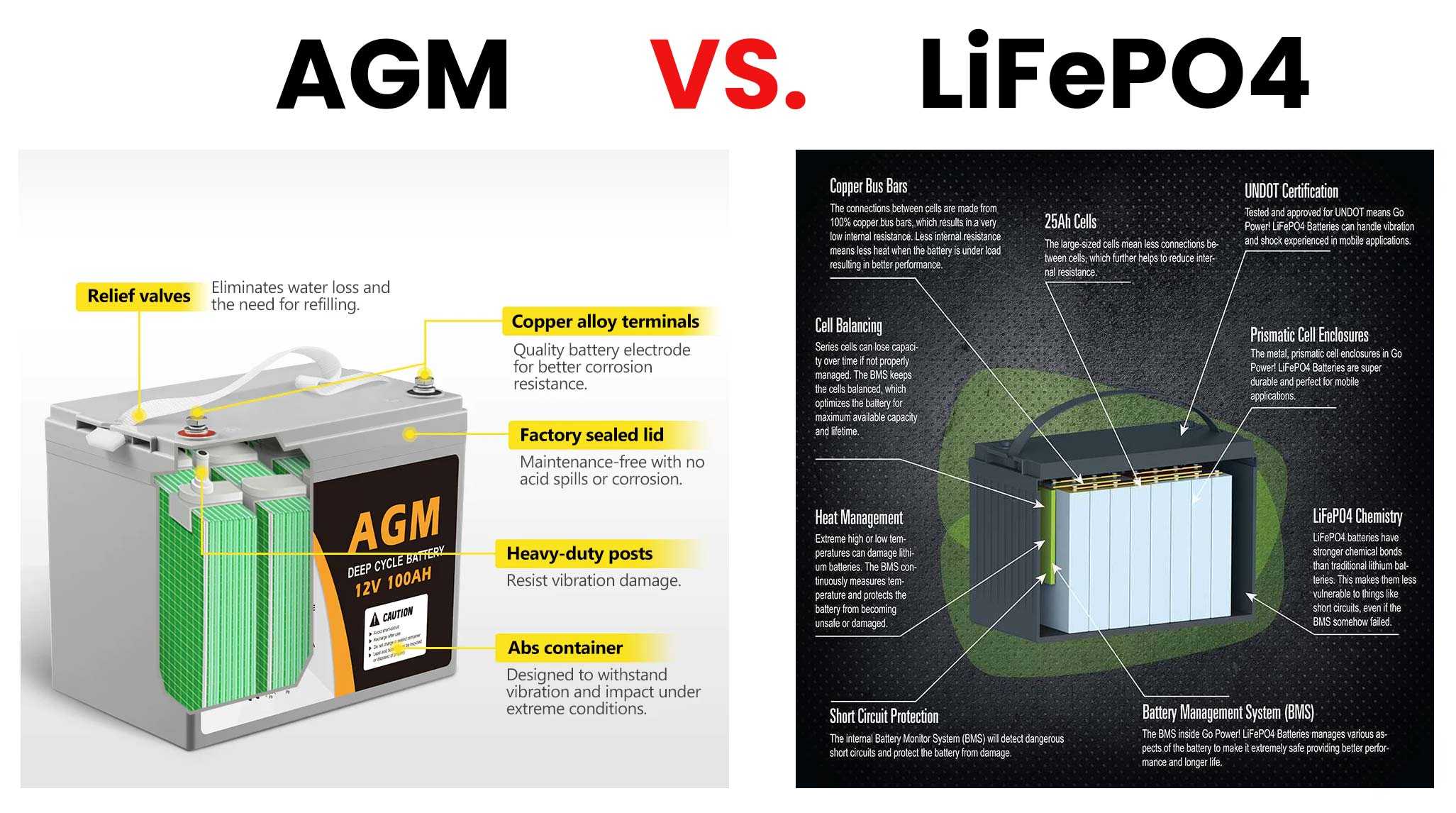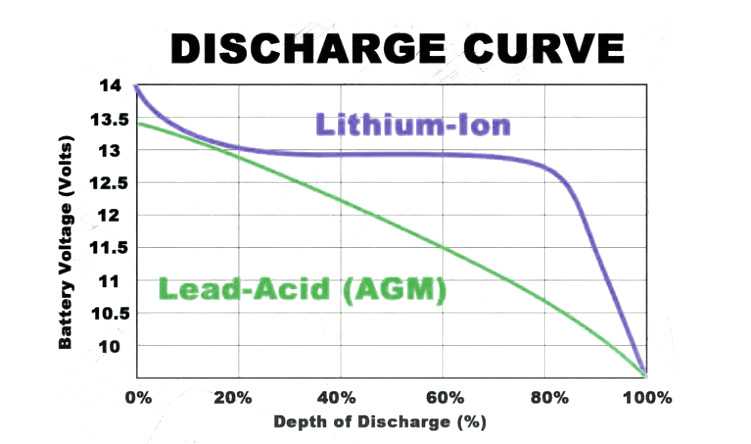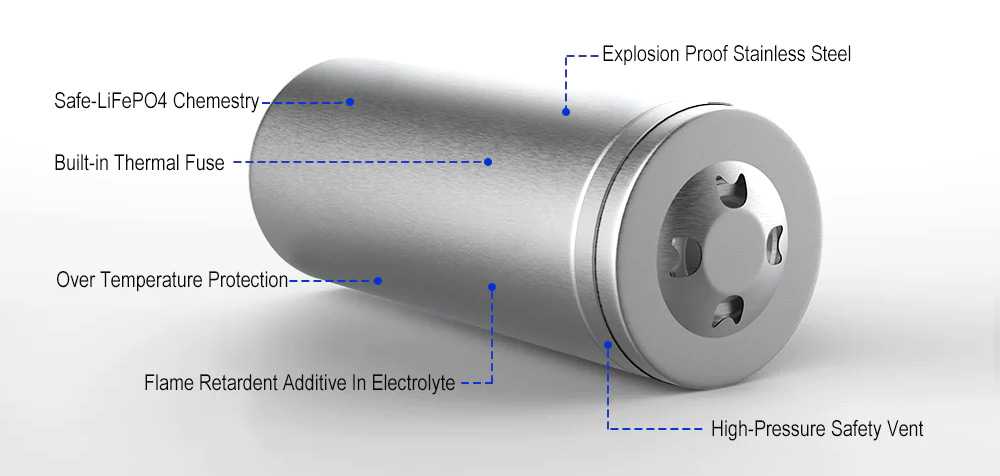Selecting the right battery for your specific application is a crucial decision, and two contenders that often vie for attention are LiFePO4 (Lithium Iron Phosphate) batteries and AGM (Absorbent Glass Mat) batteries. This comprehensive guide delves into the nuances of both types, highlighting the reasons why LiFePO4 emerges as a superior option for many applications.
1. Introduction
Batteries play a pivotal role in various applications, powering everything from vehicles to renewable energy storage. Among the multitude of battery options, LiFePO4 and AGM batteries stand out. This guide aims to explore their differences and shed light on why LiFePO4 is the preferred choice for numerous applications.
2. What is LiFePO4 Battery?
LiFePO4, short for Lithium Iron Phosphate, is the chemical composition that distinguishes this type of lithium-ion battery. LiFePO4 batteries, a subset of lithium-ion batteries, offer several advantages over their counterparts. Notably, they possess higher energy density, enabling them to store more energy in a compact size.
3. What is AGM Battery?
AGM, or Absorbent Glass Mat, characterizes the technology employed in these lead-acid batteries. Commonly used in applications such as boats, RVs, and backup power systems, AGM batteries leverage a special design to prevent electrolyte spillage.
4. LiFePO4 Battery vs. AGM Battery: Charging Efficiency
LiFePO4 batteries excel in charging efficiency, allowing for faster charging and deeper discharging without compromising the battery’s integrity. This feature makes LiFePO4 batteries ideal for applications requiring quick charging and high power output.
5. LiFePO4 Battery vs. AGM Battery: Cycle Life
LiFePO4 batteries outshine AGM batteries in cycle life, enduring a significantly higher number of charge and discharge cycles. This longevity makes LiFePO4 batteries the preferred choice, particularly in applications where frequent cycling is essential.
6. LiFePO4 Battery vs. AGM Battery: Depth of Discharge
LiFePO4 batteries exhibit a superior depth of discharge, allowing a more extensive utilization of their capacity without causing damage. This contrasts with AGM batteries, which are more limited in their depth of discharge.
7. LiFePO4 Battery vs. AGM Battery: Weight and Size
LiFePO4 batteries score high in terms of energy density, resulting in a lighter and more compact design compared to AGM batteries. This characteristic proves advantageous in applications where weight and size are critical factors, such as electric vehicles.
8. LiFePO4 Battery vs. AGM Battery: Safety
Safety considerations heavily favor LiFePO4 batteries. They are less prone to overheating and fire, providing a more stable and secure option compared to AGM batteries, which can be susceptible to such issues.
9. LiFePO4 Battery vs. AGM Battery: Cost
While LiFePO4 batteries may incur a higher upfront cost, their longer lifespan and superior performance often make them a more cost-effective option in the long run. The initial investment pays off with extended durability and reliable performance.
10. Applications of LiFePO4 Battery
LiFePO4 batteries find ideal applications across various domains, including electric vehicles, solar power storage, marine applications, backup power systems, and portable electronics.
11. Conclusion
In summary, LiFePO4 batteries emerge as the superior option across multiple parameters, including energy density, cycle life, depth of discharge, weight, size, safety, and long-term cost-effectiveness. For those seeking high-performance batteries, LiFePO4 is the optimal choice.
12. FAQs
- Can I use a LiFePO4 battery in place of an AGM battery? Yes, LiFePO4 batteries are generally interchangeable with AGM batteries in most applications. Compatibility should be verified for specific use cases.
- Can LiFePO4 batteries be charged using a standard charger? LiFePO4 batteries require a charger designed for their chemistry. Standard chargers may damage the battery or pose safety risks.
- What is the typical lifespan of a LiFePO4 battery? LiFePO4 batteries typically last for 2000 cycles or more, with lifespan varying based on application and usage.
- How can I ensure the safety of a LiFePO4 battery? Following the manufacturer’s instructions for charging and discharging, storing the battery in a cool, dry place, and adhering to safety guidelines ensures the overall safety of LiFePO4 batteries.
- How do I dispose of a LiFePO4 battery? LiFePO4 batteries should be disposed of in accordance with local regulations for hazardous waste. Consult local waste management facilities for proper disposal guidance.







